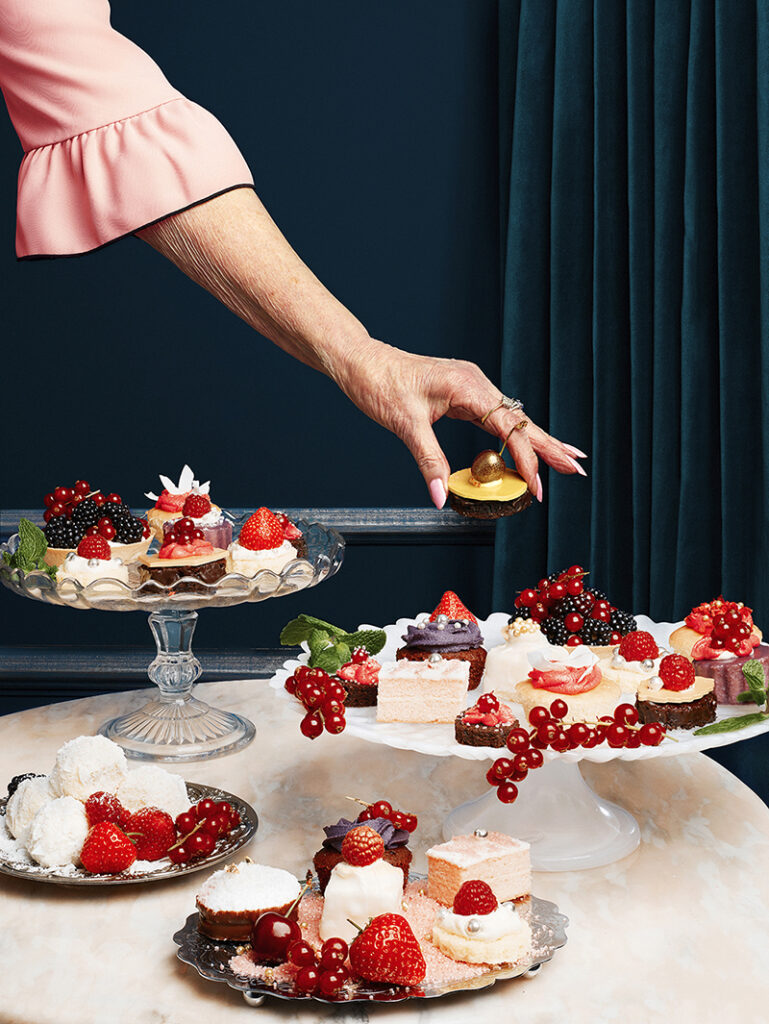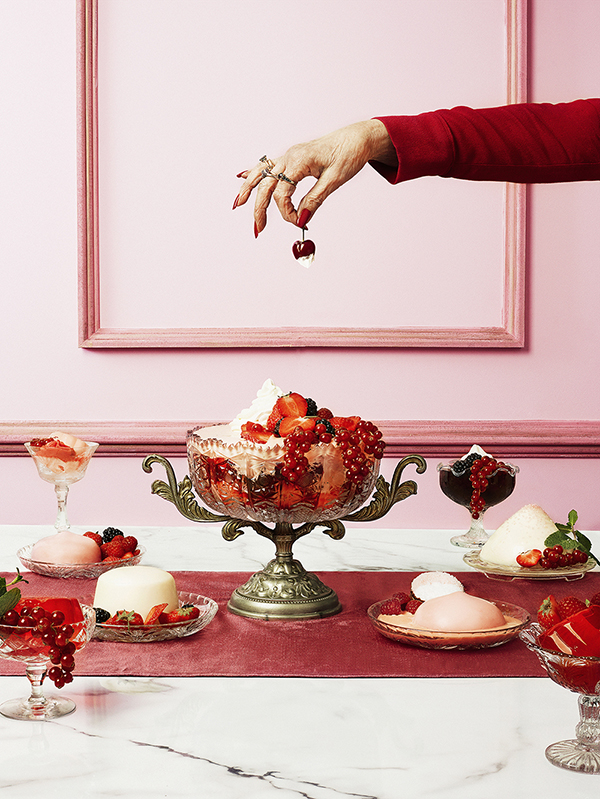A Day in the Life of a Still Life Photographer with Jessica Griffiths
Street photography or fashion? Photojournalist or portraiture? Finding or knowing your place within any industry can be a long process, but with women only accounting for 13-15% of professional photographers compared to the 70-80% women photography students (Female in Focus), it can be even more daunting to find your niche.
Hundred Heroines’ Gabrielle Kynoch joined still life photographer Jessica Griffiths over Zoom to discuss taking the plunge into freelance, how to follow intuition, and how she really got that bumblebee to pose on powder.
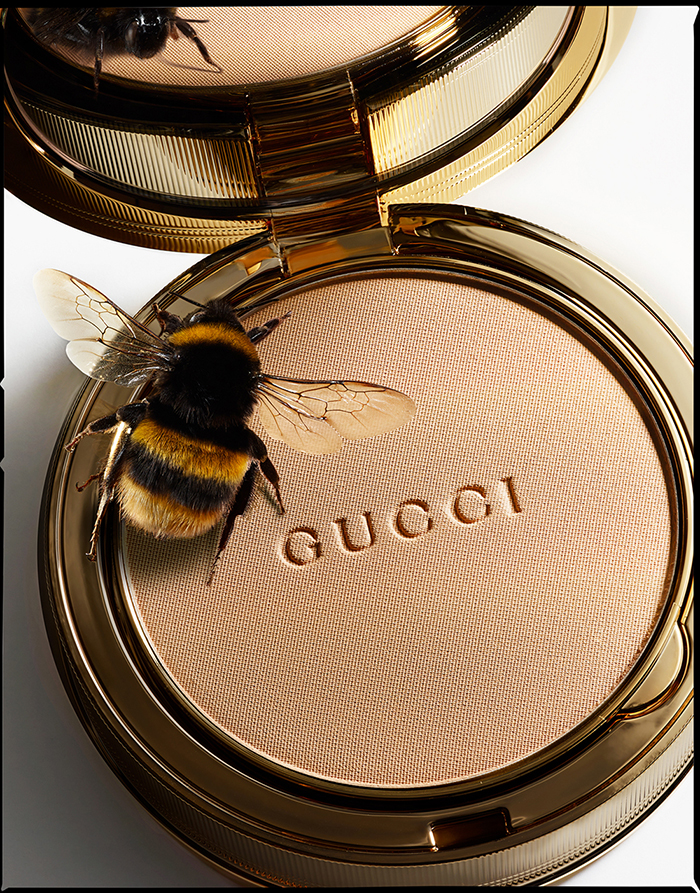
Gucci and the Beast Bronzer © Jessica Griffiths
Gabrielle Kynoch: What’s a typical day on set like for you as a still life photographer?
Jessica Griffiths: Well, first and foremost, I get into the studio and put the kettle on. It’s very important to make sure everyone on the shoot starts the day right with their coffee or tea. From there it depends whether I’m doing commissioned work or a personal project, but I would usually start with looking through the brief, or if I’m doing personal work, I’d already have an idea of what I’m going to achieve from the day and then start setting up.
Myself and the team will build the set and start to get the product/subject into place and when we get to a decent place thats roughly what were aiming for then we’ll begin to craft the lighting to achieve the right look and feel of the shot. Again if it’s a commission, I’d be discussing with the client and/or art director, working collaboratively to get the product to look the best it can, continually making sure they’re happy with the direction were going in.
If it’s a personal project, it would mean being a bit more experimental, perhaps trying out different ways to light something and perhaps trying out different ideas until myself and whoever I’m testing with: stylist, food stylist, etc. feels we’ve got what we want from the shoot. Whilst there are shoots I do on my own with personal work and working remotely due to COVID, it is very much a team process.
GK: Who is within the team? There’s food stylists!?
JG: Yes! I could not work with food, especially as a still life photographer, without them! They make the impossible possible. In my Afternoon Tea series, I worked with the stylist Loic Parisot who was incredible in making all those cakes look delicious.
Again, very much a collaboration where I told him the general vision and outcome I intended for the series and he worked out what type of cakes and sweet treats would look best in the shot and how to decorate them, and – importantly for the shoot – how to keep them looking fresh as time went on, so by the time we were ready to take the final shot they were still looking as good as they did when they first went in frame.
Within the team for that shoot specifically I also had a set builder on board, a prop stylist, a clothes stylist, a nail artist and an assistant. All with the same direction of me giving them the vision and them sourcing and making what they needed to bring the set to life for the day.
Of course the team varies depending on what I’m shooting but generally working with someone else can mean that I can give more time and attention to lighting the set correctly, getting all the exposures I need and shooting it, as I can trust that they’ve done a great job!
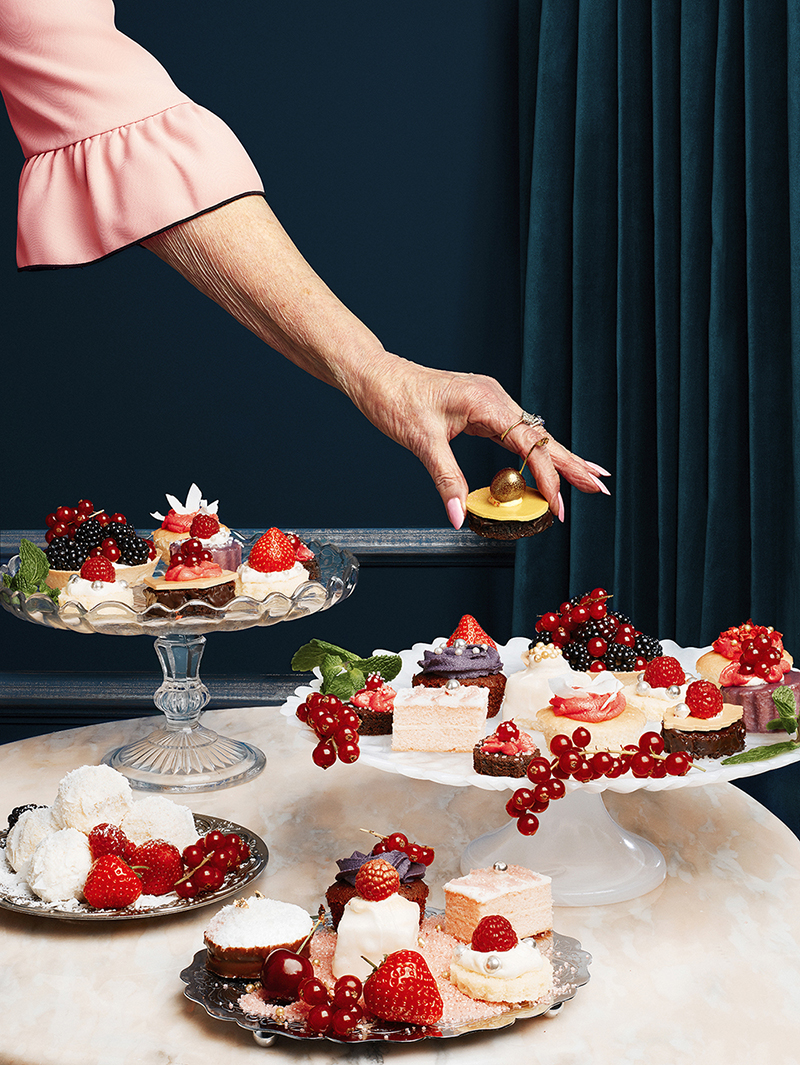
Afternoon Tea 5 © Jessica Griffiths
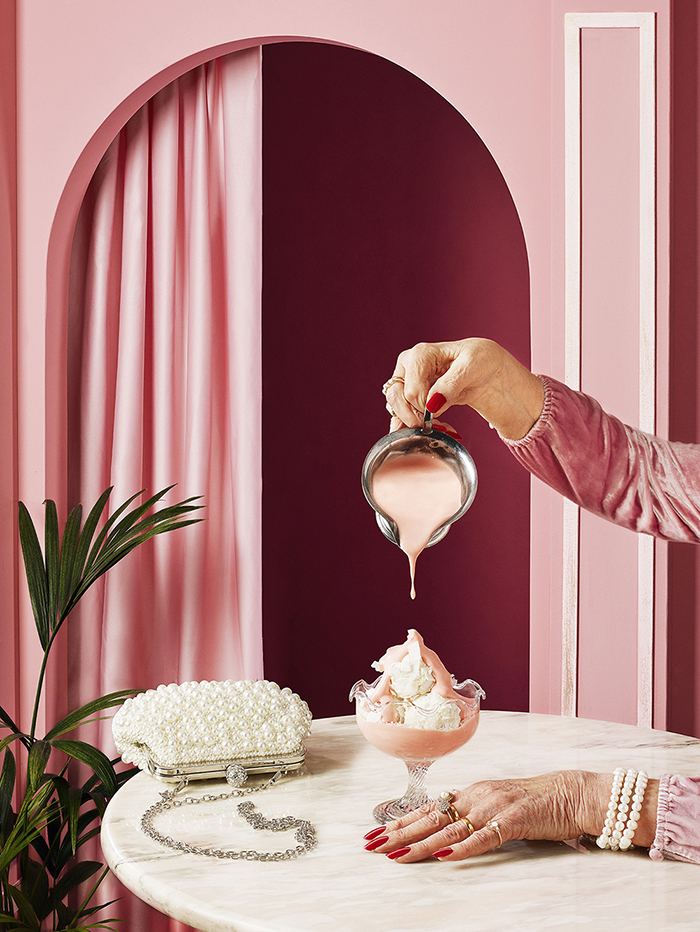
Afternoon Tea 1 © Jessica Griffiths
GK: How important is it to have a collaborative idea and are there any clashes of vision?
JG: On commissions, there aren’t many clashes between photographers and the team because we have the brief and we know what we’re working towards. For an ad, for example, there would have been a ppm [pre-production meeting] beforehand where all the elements would have been signed off so everyone knows how the final shot should look.
Some briefs are more precise than others but usually you would also have the client and/or art director on hand, and they will know exactly how their product is meant to look and would be the one dictating if what we are doing is looking correct, or if we need to keep working at it.
For editorial or personal work however, there isn’t such a precise brief and it is all a bit more free and experimental, so many more ideas are tried out. As in all teamwork, though, it’s important to be inclusive and work together to come up with something you’re both / all happy with, so I wouldn’t really say there are clashes, just communicating through different ideas and visions.
GK: How do you get your work out there? Is it through social media?
JG: Social media definitely plays a big part. The obvious platform for promoting images is Instagram due to its accessibility, ease of use and the sheer volume of people who use it so regularly. It’s also been a useful tool for putting new work out specifically during COVID when it hasn’t been possible to meet up with people to go through a portfolio.
So I’d say yes – it’s a combination of social media and meeting up with people with a portfolio to flick through, when it’s allowed again.
GK: In a creative career, do you find that all the roles you have to take on to be a personal brand is overwhelming? From photographer, to post production, social media manager, admin and all round self-brand representative. Do you find that difficult or do you thrive from that?
JG: There is a lot more to being a photographer than ‘just taking photographs’. I do have to represent myself and also go out and look for work. Often I have to respond to emails for possible jobs or organise other projects whilst I’m sometimes mid-job so it can be quite full on.
I also do most of my own retouching on personal work, but if I’m short for time or there is something that I’m struggling to do I will get help from a retoucher; I normally use ‘The Retouching Shed’.
On the whole, it is fun because you are your own representative and you get out what you put in. Not always straight away I might add – it can take time and you do really have to be persistent – but I have found busyness breeds busyness.
GK: Do you feel like you’ve hit a glass ceiling where it’s more who you know than what you know?
JG: Yes and no, jobs are commissioned based on your portfolio and personal work and you’ll have a brief to answer, so you have to be able to know what you’re doing to be able to meet that brief, but obviously, in order to get that commission in the first place you do have to promote your work and know of people commissioning jobs.
A lot of it, again, is putting yourself out there and finding the people who you think might want to work with you based on your style. But you do need to know what you’re doing in order to be hired and, more importantly, rehired.
A lot of still life photography is about problem solving and finding solutions to make the product / subject look the best it possibly can and in your own style. I love the challenge.

Ceramiscapes 01 © Jessica Griffiths
GK: Do you prefer commissions or personal projects?
JG: Without sounding too on the fence, I’d actually say both. I enjoy having a balance of commissions and personal work as they both require you to solve a challenge but in slightly different environments. For example, with personal work it’s really fun to see your own idea manifest and experiment with it to see what it ends up as.
It’s not always necessarily what you imagined and that is the point of testing. But I also find it really exciting to work with a brief where you have parameters that you have to work within to find your own response to it. A lot of still life photography is about problem solving and finding solutions to make the product/subject look the best it possibly can and in your own style. I love the challenge.
GK: What attracted you to still life photography and advertising specifically?
JG: I think I initially chose photography as a career path for the lifestyle. I realised quite early on that I wanted to work as a freelancer. I didn’t want a 9-5 job, five days a week because even in school I never really felt like that suited my personality. I often used to skive off school and do my work from home, because I didn’t like the regimented time slots of each lesson.
So I initially went towards photography because I liked the idea of having a flexible schedule, working for myself and meeting new people all the time.
I went to uni and studied photography but it wasn’t until I started assisting a variety of photographers that I realised there were different avenues within photography and specialisations. I then began working as a permalance [technically freelance but working with someone on a regular basis] assistant for a still life photographer called Dan Matthews. I just loved his graphic style and had (still have) a huge amount of respect for his approach to shooting, executing jobs and generally the balance of hard work and fun the team have on his shoots.
I think it was Dan who really opened the door to still life and advertising for me, by working with him I realised I really enjoyed the technicality of taking time to craft the light, working out the best way to go about shooting certain subjects in order to show them off in the best possible way. Then taking a step back and assessing what exposures we have, if we have all the plates [the same image but at different exposures] covered to be able to put the elements together in post and such. I love the process of it, the stillness.
GK: How is it working with a model compared to still life? Do you see it as more collaboration or is it more hectic and fast paced?
JG: I like photographing live models in a really still way, requiring very little movement and being quite static. I do really enjoy working with people and wouldn’t want to dismiss them from my portfolio because I think people can really help in telling the story.
The series that I get the most feedback from is Afternoon Tea. My nan was actually the hand model, (I’ve always been fascinated by her hands and nails), and even though you can’t see her fully, the indication of human involvement in the shot extends the story.
I went about shooting the series in the same way as I would a still life set; I’d photograph the still elements first, get the exposures I need, and then photograph my nan and the moving elements – like the pour of pink custard for example – to all be worked out and merged together in post.
GK: What would you consider a highlight of your career?
JG: This might sound a bit too obvious, but the stage that I’m at now! I’ve been assisting photographers for a few years now and over the past couple I’ve been starting to put my portfolio together with images that I really like, ones that I want to represent me.
So I’m now at the stage where I’m transitioning to become a photographer and accepting less assisting work; I’m actively going out to find my own jobs as the photographer, not as the assistant. It can be a long and slow transition and it’s quite scary taking the jump but it’s also exciting.
It’s reaching out to new people and saying ‘Here I am, this is what I do, I’d love for you to take a look and get your thoughts”. It’s a daunting process to step out of my comfort zone again but also very inspiring to get new people to look at your work with fresh eyes and get feedback on it.
GK: Out of your oeuvre, which would you say was your most enjoyable personal project?
JG: I think I would say Gucci and The Beast. The idea took a while to develop, initially I had it in my head that it would look like a cityscape, a skyline of lipsticks and I was thinking of a really small creature being like a little King Kong amongst them!
I was trying to find the right creature to cast as King Kong in the micro environment and eventually I settled on the idea of an ant. It’s so small and you never really see an ant up close; having it as a ginormous creature on the lipstick I thought would look really cool.
Also having this image of an ant walking on a lipstick that you would put on your face was kind of gross to me! Wanting to push it further, I wanted more insects touching beauty products because it’s a bit uncomfortable to look at and jarring.
The lipstick that I really liked was Gucci so I went through the other products in the collection and I came across the powder. Looking at Gucci, the bee icon is synonymous with the label so I thought a bee would match perfectly with the powder. Also it had the similar tones; the gold rim matched the amber stripes of the bee and its soft fluffiness was tangible with the texture of the powder.
Then as soon as I saw the Gucci perfume, I imagined it with a snail crawling / moving across it. The texture of the glass, the colour and the translucency, to me, matched with the translucency of the snail’s body and how the light would be able to travel through both the perfume bottle and the snail creating reflections and highlighting texture. Then it was just a case of getting the insects to play ball!
GK: Did you use a real bee?!
JG: No sadly, it was a taxidermy bee, mainly because I’m very scared of bees and I wouldn’t want to upset a bee in the studio or hurt it. But the ant and snail were real! I brought a few snails from my garden to try cast as the model but there was only really one hero that stood out with a really nice shell – it was a good shape and size. Once on set, however, the snail was quite shy, but towards the end of the day it really came out of its shell…
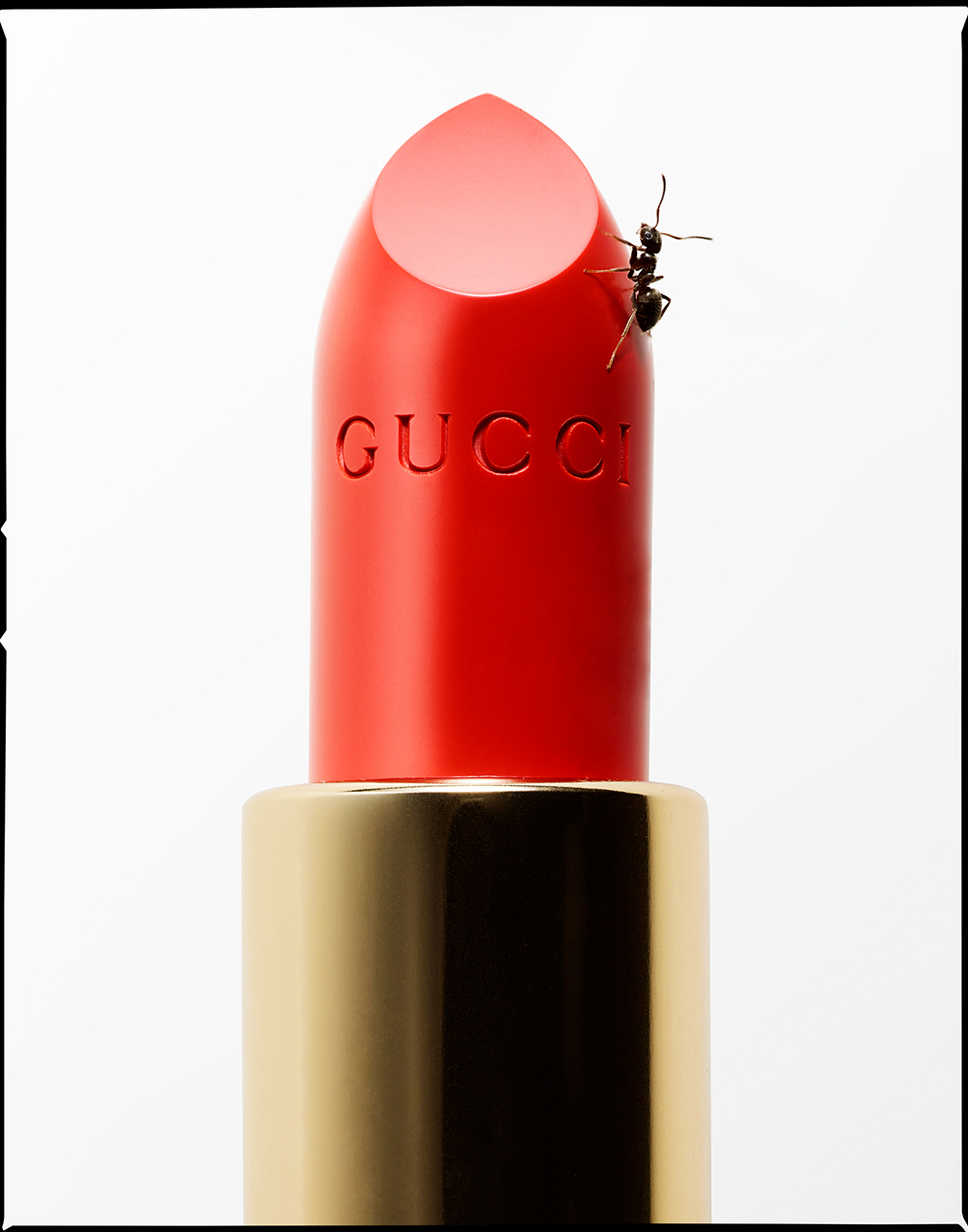
Gucci and the Beast Lipstick © Jessica Griffiths
GK: A lot of your personal projects have a very feminine approach, from the colour palettes to the products you shoot. How would you describe your aesthetic?
JG: I feel like I’m still working out my style, I haven’t yet really taken a step back to reflect on my aesthetic. I feel like I’m just drawn to certain colour combinations and lighting techniques that accumulatively come across softer, perhaps?
GK: What’s in the pipeline? Any personal projects?
JG: I always have a few smaller scale projects in my head, which is why I photographed a lot of cosmetics and beauty products over lockdown because they were simpler and didn’t need as much budget. I have a few bigger projects in mind that involve people but these obviously take longer to produce so I’m aiming to organise a larger production soon. But I have an idea right now and it is very exciting! It’s going to be quite a big set build which will be with the set builder Harry Scott; we collaborate on quite a lot of my projects! Working with a talented team is essential for any big project.
GK: Do you have advice for someone just leaving university and wanting to pursue a similar career path?
JG: I have three main points; first of all, know your strengths and weaknesses. When I left university and took my first steps into the industry I was on a different path within photography. I didn’t know what to specialise in, but as I began assisting photographers I started to recognise my strengths, interests and also my weaknesses. Having that knowledge was so helpful in working out my next steps to find a role within the industry that I wanted to pursue. And that might not even be a photographer in some cases; there’s a lot of people who study photography but discover they prefer production or picture editing or retouching for example. By knowing your strengths and weaknesses it can help you find your place sooner.
I would also suggest assisting a wide variety of photographers. Everything you learn is a skill and is transferable. Even if you don’t end up as a photographer but in another role within the industry it’s good to know the basics around the set. And for varieties’ sake, you shouldn’t just stick to one field of photography straight away. Learning lighting in different settings, and all the ways other photographers do things, will just add to your knowledge and hopefully help you decide the way you like to do things in your own right.
And finally, don’t be afraid to ask for help. Speaking from the point of view as an assistant, if I didn’t know something about the equipment or the software, I would gently let the photographer I was working for know that I wasn’t sure and ask how to use it. The photographer would always prefer you to be honest and upfront with them.
Being an assistant is just as much about learning as it is about being helpful and making the show run smoothly. It’s okay to not know everything; I certainly still don’t.
GK: And finally, who are your personal heroines in photography?
JG: My first heroine in photography I think was Hannah Starkey. My university dissertation was based around the staging of an image, and among a few other examples I referred to I feel as though Hannah portrayed this really beautiful contrast of stillness and movement in her body of work. Even now I debate whether some of her imagery was staged or that she just happening to walk past a really beautiful scene. It made me wonder more about the storytelling and I feel like Hannah Starkey really pushed me to ask a lot of questions about photography, both in my personal work and in the concept of image making as a whole.


